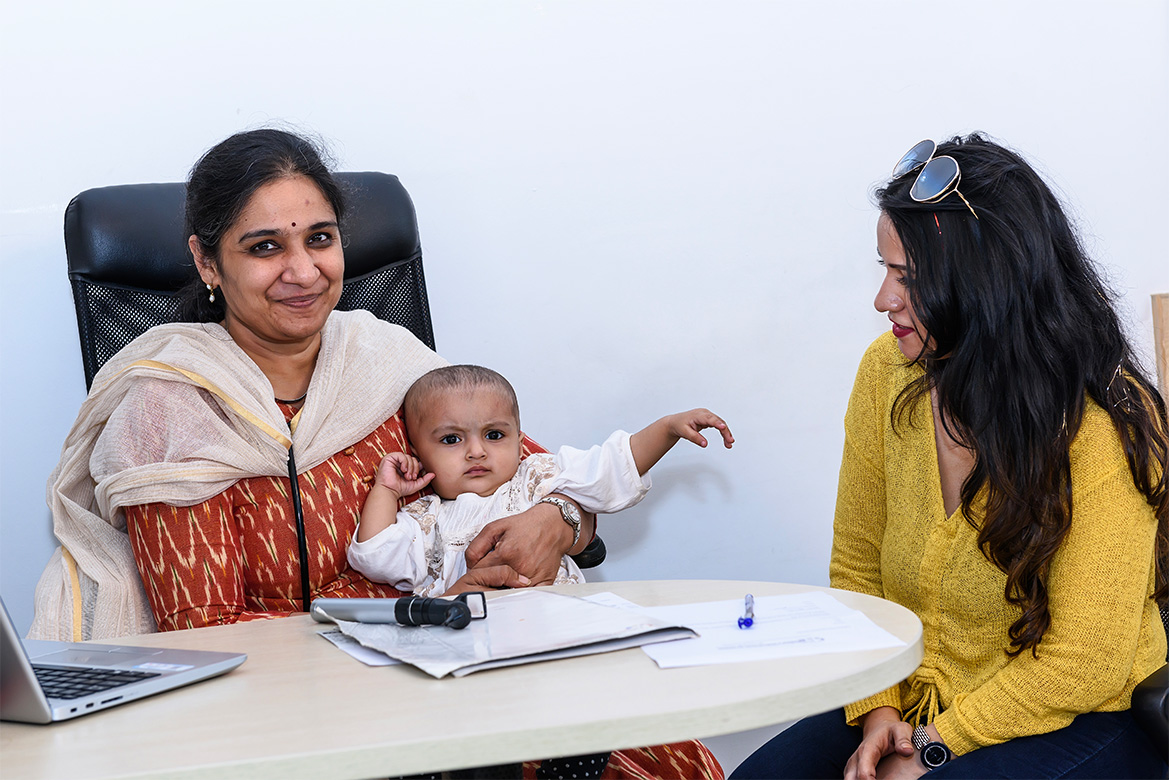for Upper Respiratory Infections and Diarrhoea:
When, What and How?
Upper respiratory tract infections and diarrhoea are the two most common infections seen in children. To ensure clinical success with minimal adverse effects and risk of drug resistance, it is important to make a rational choice about when and which antimicrobial to use in such infections.
Upper respiratory tract infections
Most upper respiratory tract infections in children are viral in origin. Clues to viral etiology are: high fever on the day of onset; normal behavior when the fever recedes; runny nose; cough; diarrhoea; and rash. The presence of purulent nasal discharge does not necessarily indicate bacterial infection as the discharge can also be caused by viral infection.
Antibiotics have no role in the management of viral upper respiratory tract infections and do not prevent bacterial super infections or complications. Antibiotics are to be indicated only when streptococcal pharyngitis, acute suppurative otitis media (ASOM) and acute bacterial sinusitis are suspected. Streptococcal pharyngitis usually occurs in children between three and five years of age. The condition is associated with high fever along with pus points in the pharynx along with cervical adenopathy. In such cases, runny nose and cough are usually absent.
If streptococcal sore throat is suspected, a throat swab culture should be sent for examination and oral amoxicillin must be given for a period not less than 10 days— in two to three divided doses of 30-40 mg/day. If compliance is an issue, benzathine penicillin may be given intramuscularly as a single dose (if the weight of the child is < 27 kg then 600,000 units; if the weight of the child is > 27 kg then 1.2 million units). In case of ASOM or acute bacterial sinusitis, amoxicillin may be given for non-severe disease and coamoxiclav for severe disease for a period of 7-10 days.
Antibiotics which should not be used for URI are cefixime (no activity against S. pneumoniae), cefpodoxime (very broad spectrum with risk of promoting resistance), 1st generation cephalosporins (cefadroxil, cephalexin as they do not cover H. influenzae), cotrimoxazole (poor clinical efficacy) and quinolones.
Acute diarrhoea
Like URI, most cases of diarrhoea in children are of viral origin and therefore do not merit antibiotics. Indications for antimicrobials in diarrhoea are presence of visible blood in the stools; presence of sheets of pus cells on stool routine microscopy; laboratory confirmed amoebiasis/giardiasis; and cholera.
The presence of a few pus cells in the stool is not an indication for antibiotics as pus cells show up in viral diarrhoea as well. Presence of cysts of E. histolytica (EH) in stools is also not an indication for antimicrobials, as 90 per cent of these cysts occur as a result of E. histolytica dispar—a non-pathogenic/commensal form of EH. It should also be noted that less than three percent of diarrhoea in children below five years of age is caused as a result of E. histolytica; therefore, metronidazole should not be used empirically for treatment.
In case of bloody diarrhoea, or for suspected shigellosis, recommended antimicrobials are ciprofloxacin/ofloxacin (10-20 mg/kg/day), azithromycin (five mg/kg/ day single dose), cefixime (eight-10 mg/kg/day single dose), and, for severe cases requiring hospitalization, ceftriaxone (50 mg/kg/day). The therapy should last for a course of five days. It is important to note that increasing resistance to cotrimoxazole and nalidixic acid has reduced the utility of these drugs in the management of shigellosis.
Antimicrobials that have poor invivo-efficacy despite in-vitro susceptibility to shigella include aminoglycosides, oral colistin, furaxone, first and second generation cephalosporins and amoxicillin.
 Back to Site
Back to Site